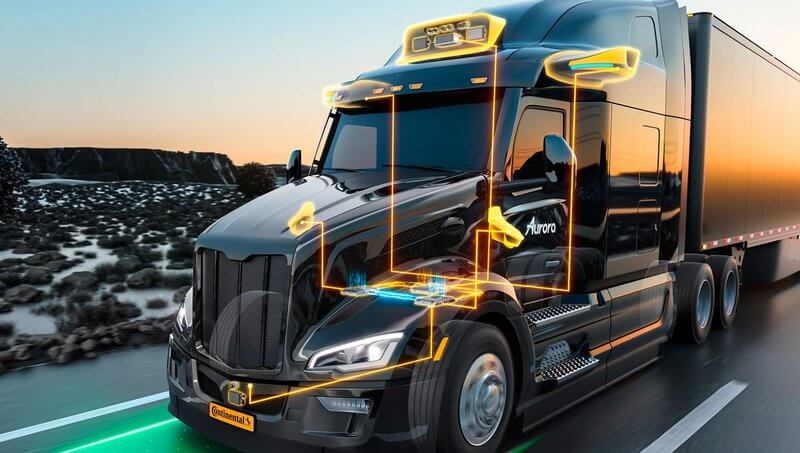Autonomous trucks are poised to revolutionize long-distance freight transportation and reshape the future of logistics networks. Several factors are driving this transformation, including the increasing demand for efficient and cost-effective transportation, driver shortages, and advancements in autonomous vehicle technology.
One of the primary benefits of autonomous trucks is the potential for significant cost savings. Autonomous trucks can operate nearly 24/7, increasing truck utilization and reducing downtime. They can also optimize fuel efficiency and reduce wear and tear on vehicles through smoother, more consistent driving. According to McKinsey analysis, total cost of ownership for heavy-duty trucks could be reduced by 42% per mile, despite the costs of AV kits and services. The autonomous heavy-duty trucking market could reach an aggregated $616 billion in 2035 in China, the United States, and Europe.
Autonomous trucks can also help address the growing shortage of truck drivers. The United States, for example, is currently facing a shortage of over 80,000 drivers, and that number is expected to double by 2030. By automating long-haul driving tasks, autonomous trucks can augment the existing driver workforce, allowing human drivers to focus on more complex or specialized tasks, such as local deliveries or customer interactions. Some reports suggest that autonomous trucks will create more desirable jobs and more home time for drivers.
Furthermore, autonomous trucks have the potential to improve safety on roadways. Autonomous systems can reduce accidents caused by human error, such as fatigue, distraction, or impaired driving. They are equipped with advanced sensors, cameras, and software that enable them to perceive their surroundings and react more quickly and effectively than human drivers. According to the National Highway Traffic Safety Administration, automatic emergency braking, a technology already integrated into many trucks, could prevent more than 19,000 crashes, 8,800 injuries, and more than 155 deaths annually.
Despite the many potential benefits, there are also several challenges to the widespread adoption of autonomous trucks. One of the main challenges is regulatory uncertainty. The regulatory landscape for autonomous vehicles is still evolving, and there is a lack of consistency across different states and countries. This can create uncertainty for companies looking to deploy autonomous trucks and hinder cross-border operations.
Another challenge is the high cost of developing and deploying autonomous truck technology. Retrofitting existing trucks or purchasing new self-driving models can be expensive. There are also concerns about safety and public perception. While autonomous technology promises improved road safety, high-profile accidents involving self-driving vehicles have fueled skepticism.
Despite these challenges, many companies are investing heavily in autonomous truck technology. Startups are retrofitting trucks with advanced autonomous systems, and technology companies and traditional truck manufacturers are both investing billions of dollars in developing autonomous trucking capabilities. These companies are working closely with logistics providers, regulators, and other stakeholders to address the challenges and pave the way for the widespread adoption of autonomous trucks.
The deployment of autonomous trucks is expected to occur in phases. The first phase will likely involve constrained autonomy in hub-to-hub operations, where human drivers handle the first and last mile, and self-driving trucks operate on highways between designated hubs. As the technology matures and regulations become clearer, autonomous trucks will likely be deployed in a wider range of applications, including e-commerce delivery, port automation, and resource transportation. Continental, in partnership with Aurora, aims to bring self-driving trucking systems to roads in the USA from 2027.
In conclusion, autonomous trucks have the potential to transform long-distance freight transportation and reshape the future of logistics networks. While there are still challenges to overcome, the potential benefits in terms of cost savings, driver shortages, and safety are significant. As the technology continues to evolve and regulations become clearer, autonomous trucks are poised to play an increasingly important role in the global transportation industry.

















